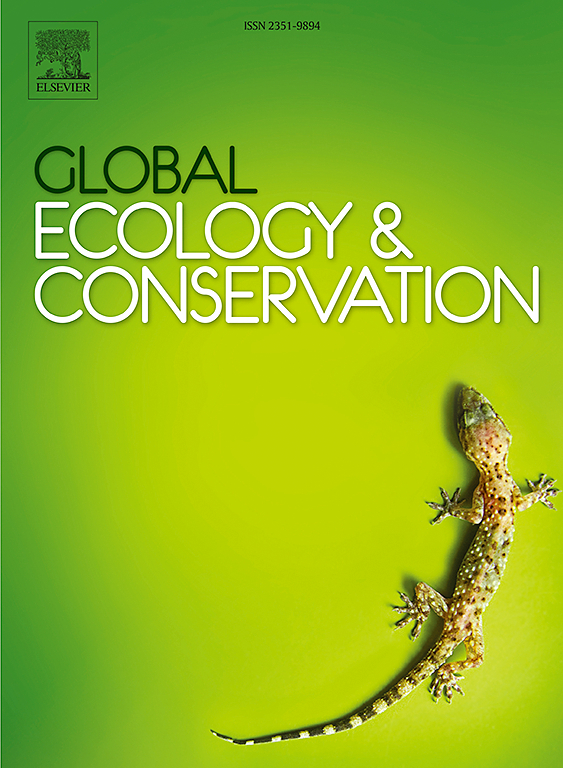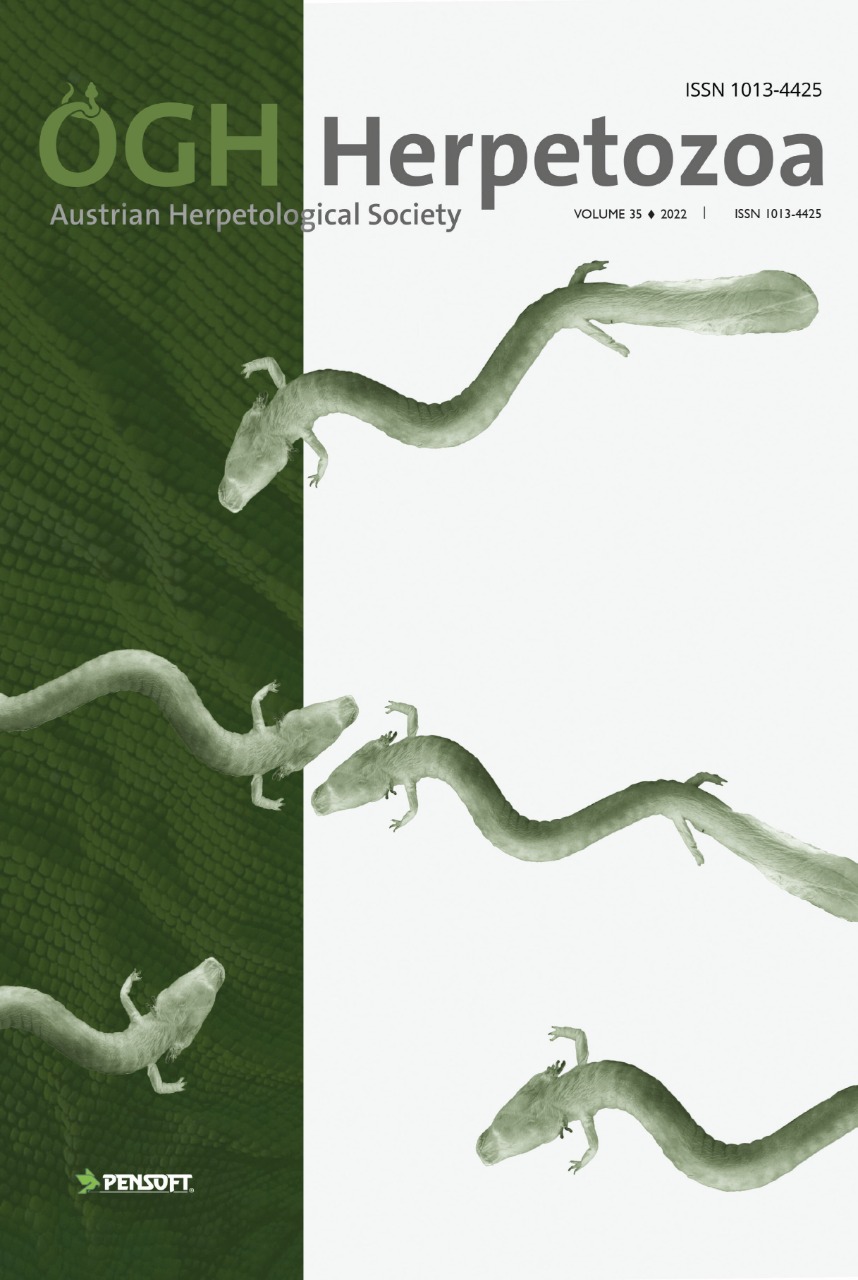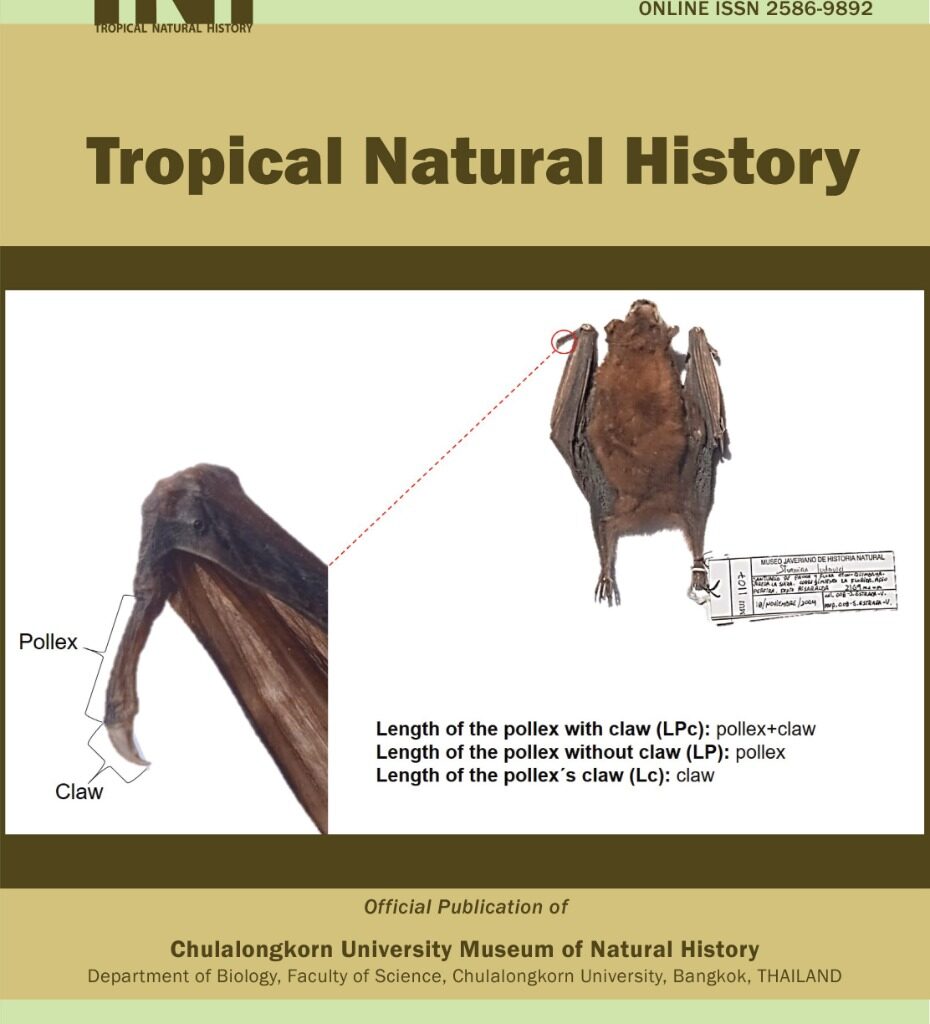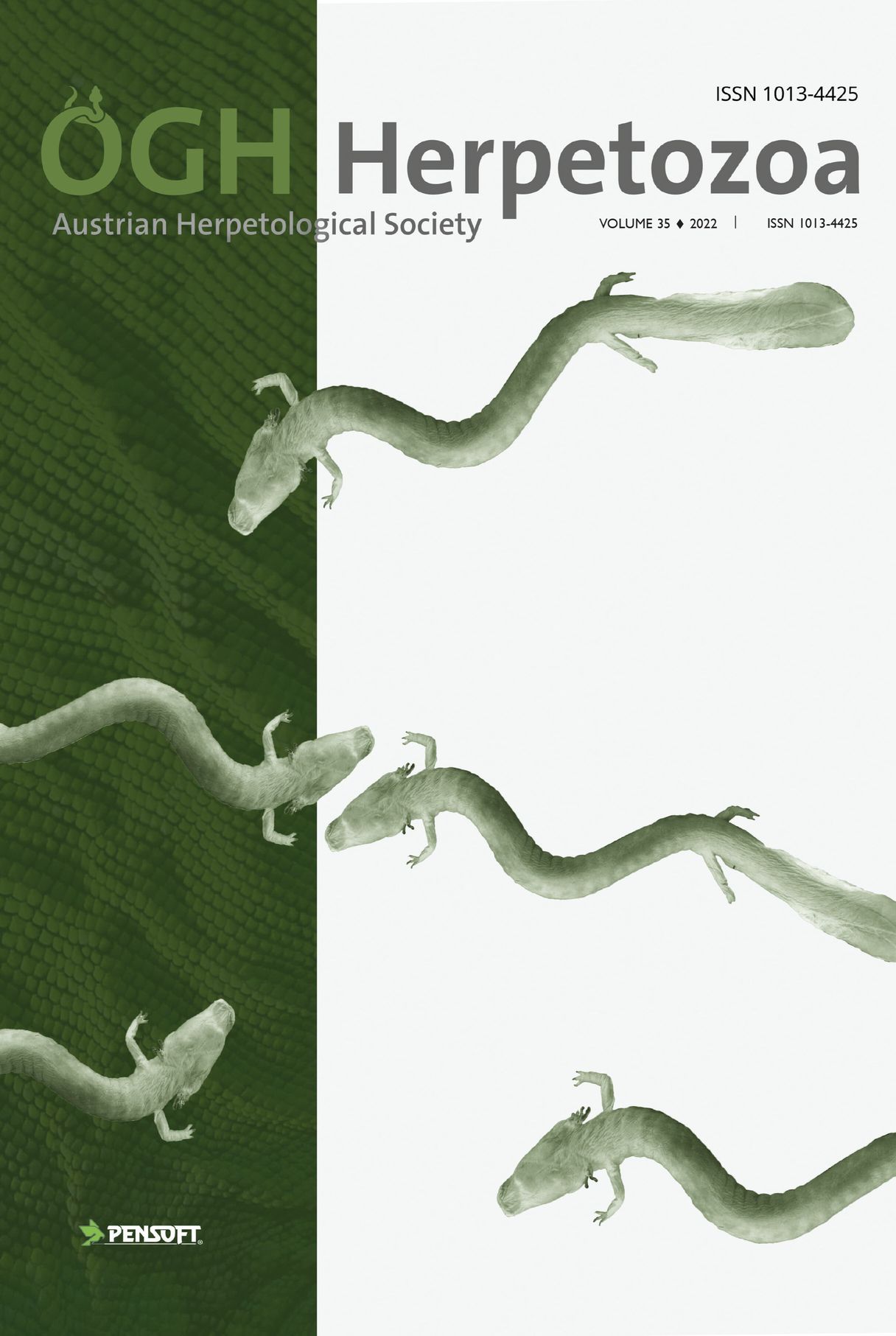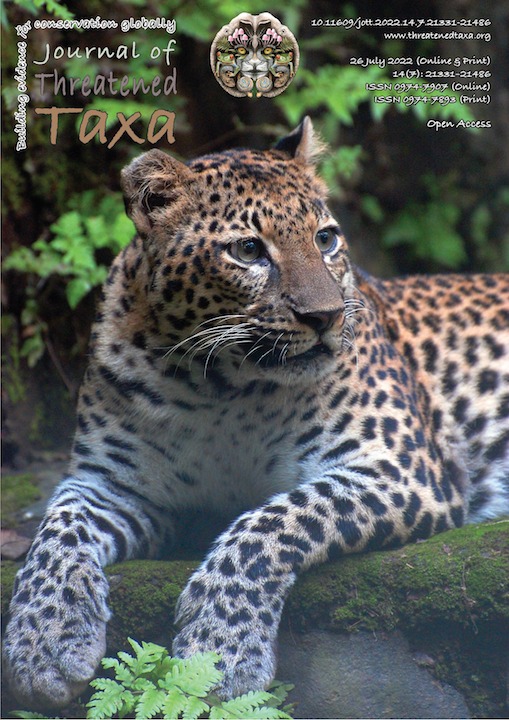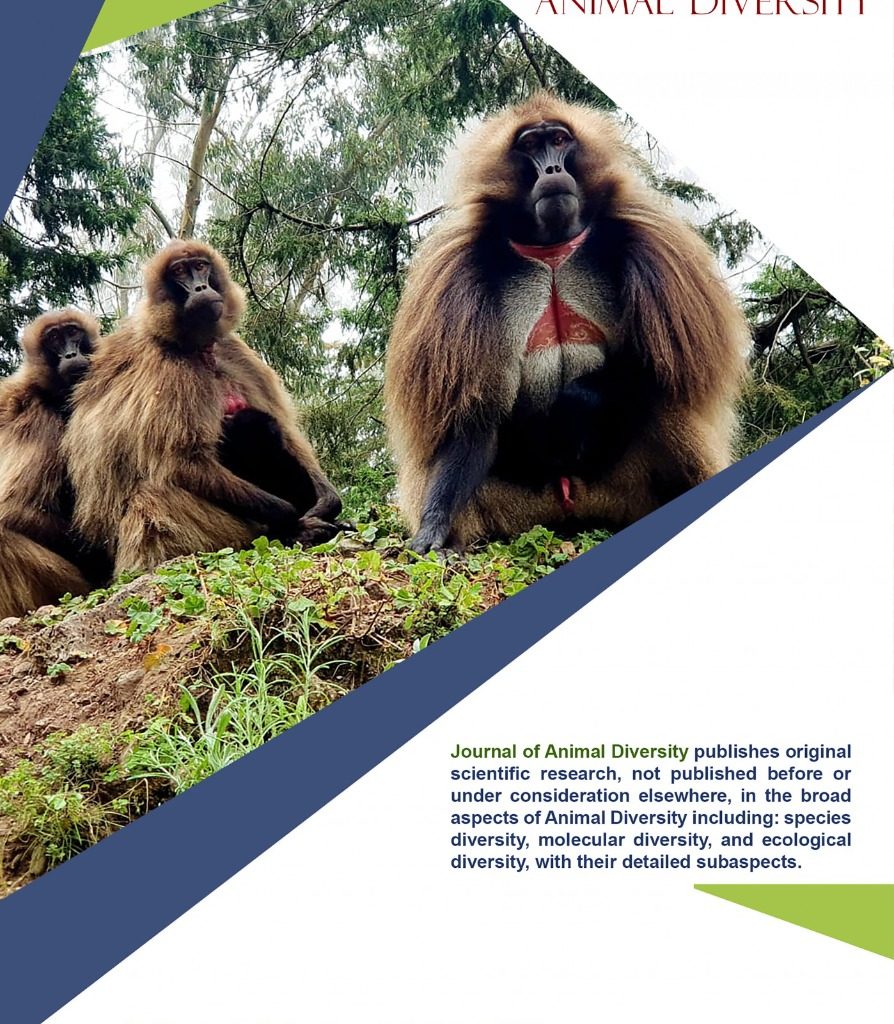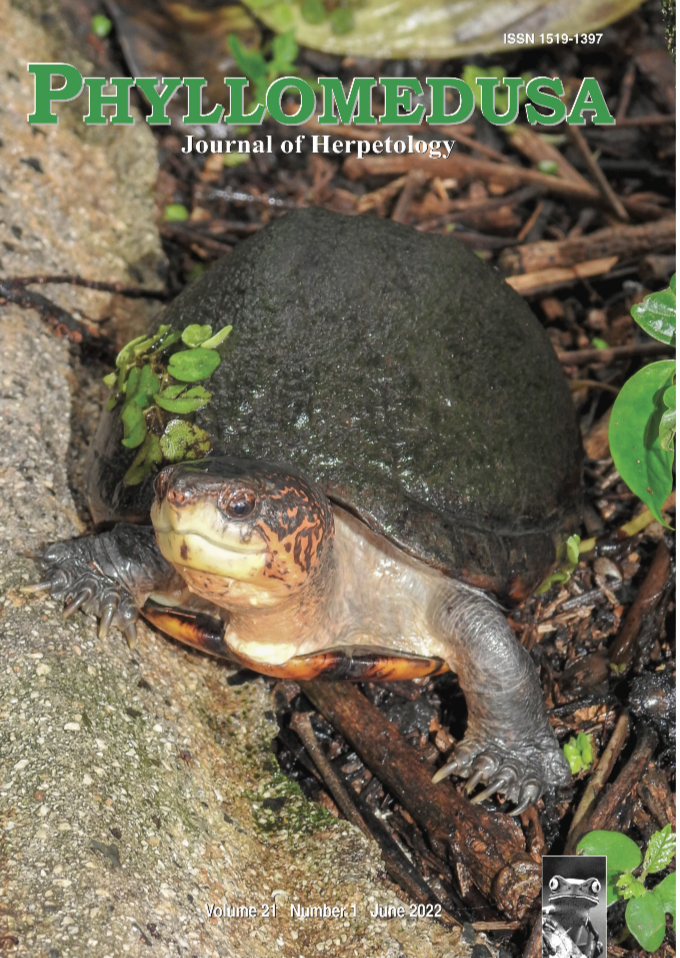Factors influencing the habitat selection of Mugger crocodile (Crocodylus palustris) and its conservation threats in the Rapti River of Chitwan National Park, Nepal
Authors:
Nishan K.C., Bijaya Neupane, Bibek Belbase, Bijaya Dhami, Bhuwan Singh Bist, Chitra Rekha Basyal and Santosh Bhattarai
Abstract: Mugger crocodiles (hereafter called muggers) are the apex predator and keystone species in slow flowing freshwater ecosystem. They play an important role in its functioning by distributing nutrients and increasing primary productivity. Muggers have a sympatric distribution with gharials in the Rapti and Narayani River of Chitwan National Park, but more research and conservation attention has been focused on gharials in Nepal. The inadequate availability of information on the occupied habitats of muggers restrict their evidence-based conservation and management. Therefore, we investigated the ecological factors affecting the habitat selection of muggers and its conservation threats in the Rapti River. We conducted a preliminary survey, followed by a detailed habitat survey, conducted in February and March 2022. During the detailed habitat survey, the pre-defined habitat characteristics were recorded at each station spaced at 500 m intervals along the river as well as the locations where muggers were sighted. We used a generalized linear model (glm) under the binomial family with a logit link function to analyze the factors influencing the habitat selection of muggers. The dependent variable was the presence or absence of muggers at sampling points and the independent variables included: river bank aspect, river width, mid-river depth, river bank substrate type, river bank slope, water current, invasive alien plant species, and anthropogenic disturbances. In addition, a relative whole-site ranking method was employed to determine the most prevalent threats to the mugger. During the survey period, we recorded a total of 46 mugger individuals, 71.8% were observed basking and 28.2% were observed submerged in the river. The highest percentage of muggers (39.1%) was observed on the sandy river bank, followed by the grass and forest bank (19.5%), and clay and sandy bank (15%), respectively. Only the river banks with moderate (15–25°) and moderately steep (25–35°) slopes were found to be the significant factors influencing the occurrence of muggers. Fishing and extraction of river materials, and disposal of garbage and solid waste were ranked as the most prevalent conservation threats. For the long-term conservation of muggers in the Rapti River, effective habitat management plans and strategies are required to control illegal anthropogenic activities such as fishing, sand mining, and boulder quarrying. Research on spatio‐temporal partitioning between mugger and gharials is recommended to understand how resources are shared by the species.
Rarely naturalized, but widespread and even invasive: the paradox of a popular pet terrapin expansion in Eurasia
Authors:
Nishan K.C., Bijaya Neupane, Bibek Belbase, Bijaya Dhami, Bhuwan Singh Bist, Chitra Rekha Basyal and Santosh Bhattarai
Gharial (Gavialis gangeticus, Gmelin, 1789) abundance in the Rapti River, Chitwan National Park, Nepal
Authors:
Ramesh Kumar Yadav, Saneer Lamichhane, Dol Raj Thanet, Trishna Rayamajhi, Santosh Bhattarai, Ashish Bashyal, Babu Ram Lamichhane
Abstract: Gharial (Gavialis gangeticus) is a Critically Endangered crocodilian species whose abundance
in Nepalese rivers is low due to the threat they face. We estimated gharial
abundance in the Rapti River, one of the major rivers in Chitwan National Park (CNP)
holding the largest numbers of gharials in Nepal. The Rapti River, running across the
CNP, was divided into 18 segments, each measuring ~4 km, and gharials were counted
directly with three replicates. Gharial count data were analyzed using an N-mixture
model (negative binomial) and the overall occupancy of gharials was estimated using
a single season occupancy model. Covariate effects were also investigated on gharial
abundance. Our findings revealed that the Rapti River is home to 150 gharials (119–181),
with a mean abundance of 8.3 (SD = 3.45) across each segment. The presence
of humans and square of Rapti River depth were the significant covariates that had a
negative and positive impact on gharial abundance, respectively. Similarly, the number
of sandbank present influenced the detection probability of gharials. Our study shows
that gharial population estimation can be improved using the N-mixture
model. The
overall gharial occupancy estimated using single season occupancy model was 0.84
(SD = 0.08), with a detection probability of 0.37 (SD = 0.02). The management authority
should concentrate on segments to minimize human disturbance (e.g., fishing,
washing clothes, extraction of riverbed materials). If the gharial population in this river
declines, their population in central Nepal will be threatened. Hence, we suggest designating
the Rapti River section that passes across the CNP as a “no extraction zone.”
First record of Chilapata rain-pool frog Minervarya chilapata Ohler, Deuti, Grosjean, Paul, Ayyaswamy, Ahmed & Dutta, 2009 (Anura, Dicroglossidae) from Nepal
Authors:
Bivek Gautam, Santosh Bhattarai
Abstract: Chilapata rain-pool frog (Minervarya chilapata) was described in 2009 from the Chilapata Reserve Forest of West Bengal, India. Here, we report the occurrence of M. chilapata for the first time from Morang district, Nepal, based on acoustic and morphological characters such as the presence of a distinct white line in the upper lip, small size (snout-vent length 18 to 26 mm), pointed snout and presence of dorso-lateral black patch. The nearest record of Chilapata rain-pool frog in Nepal from Pathari-Kanepokhari forest, Morang district, Nepal is ca.182 km west of its type locality Chilapata Reserve Forest, Jalpaiguri district, West Bengal, India. We also report the occurrence of M. chilapata from Barandabhar Biological Corridor, Chitwan National Park, Nepal based on a photographic record. The International Union for Conservation of Nature (IUCN) has listed the species as Data Deficient. Therefore, this record from Nepal will add new presence data for future status assessment for the species.
Notes on Successful Nest Relocation of Chitra indica (Gray, 1831) from Chitwan National Park, Nepal
Authors:
Bed Bahadur Khadka, Saneer Lamichhne, Santosh Bhattarai
Mugger Crocodile
Status, distribution and habitat use by Mugger crocodile (Crocodylus palustris) in and around Koshi Tappu Wildlife Reserve, Nepal
Authors:
Divya Bhattarai, Saurav Lamichhane, Pratik Pandey, Santosh Bhattarai, Jeetendra Gautam, Ram Chandra Kandel, Chiranjibi Prasad Pokheral
Abstract: Mugger crocodile is found in various locations of Nepal, ranging from Eastern to Western lowlands, and is also a
resident crocodilian of the Koshi Tappu Wildlife Reserve (KTWR). Fewer studies have been carried out on the status and distribution of this crocodilian with limited information on its habitat characteristics. This study sets forth to highlight the population status, distribution and habitat use by mugger crocodile in and around KTWR. Detailed surveys were conducted in the rivers, natural and private ponds of the KTWR in December 2020. Every 500 m along the survey transects, habitat characteristics were recorded in each habitat station as part of the
habitat survey. The dependent variables were presence or absence of mugger crocodile in each habitat station. Meanwhile, the independent variables included habitat predictors such as; water depth, slope, elevation, distance to roads, distance to settlements, bank substrate, and human disturbance. Generalized Linear Model under binary logistic regression was employed to test variables associated with presence and absence of muggers for statistical significance. The population survey of the muggers was assessed by day counts either using dugout canoe or walking along transects. During the research period, 35 individuals of muggers were recorded. The probability of mugger sighting augmented with increased slope and depth. 34 muggers (97.14 %) were basking, while 1 (2.85%) were seen swimming out of the total muggers detected. In private and public ponds, 22 muggers were sighted, while 13 were sighted in the main Koshi river, its branches, and the Moriya river. Sixteen muggers (45.71%) were sighted within the reserve, while the remaining 19 muggers (54.28 %) were sighted in the buffer-zone
areas. The probability of mugger sighting varied considerably with regard to slope and water depth among the seven habitat predictors examined. In lieu of prevailing fishing pressure in the river systems of the KTWR and easy availability of prey species for muggers in private fishponds; the muggers are likely use private fishponds more frequently. In order to subdue the muggers inside the KTWR, the reserve authority has a vital role for proper habitat management decisions and regulation of fishing activities.
Sikkim grass lizard
First record of Takydromus sikkimensis Günther, 1888 (Squamata, Lacertidae) from Nepal
Authors:
Bivek Gautam, Santosh Bhattarai, Ram Chandra Kandel
Abstract: We report the first record of Sikkim grass lizard, Takydromus sikkimensis Günther, 1888 in Nepal based on morphological characters such as the presence of four pairs of femoral pores, 12 rows of ventral scales, tail more than 3.6 times longer than snout-vent length. Our record of T. sikkimensis at Miklajung, Morang district represents the western-most observation of the species, ca. 94 km west of its type locality, Sikkim, India and is the first in Nepal for this species, genus, and family. This record is from Chure/Siwalik hill range which lies outside of Nepal’s protected area network. This species is listed as Endangered by the International Union for Conservation of Nature and Natural Resources and warrants detailed inventory and immediate conservation interventions.
Journal of Threatened Taxa
First camera trap record of Striped Hyena Hyaena hyaena (Linnaeus, 1758) (Mammalia: Carnivora: Hyaenidae) in Parsa National Park, Nepal
Authors:
Pramod Raj Regmi, Madhu Chetri, Haribhadra Acharya, Prakash Sigdel, Dipendra Adhikari, Naresh Subedi, Babu Ram Lamichhane
Journal of Animal Diversity
Photographic evidence of the Large-toothed Ferret Badger Melogale personata I. Geoffroy Saint-Hilaire (Carnivora: Musteliade) in the Annapurna Conservation Area, Nepal
Authors:
Rishi Baral, Yadav Ghimirey, Basudev Neupane, Baburam Lamichanne, Santosh Bhattarai, Karan Bahadur Shah
Wildlife Research
Human influence on burrow activity of the Chinese pangolin in Nepal
Authors:
Ambika Pd, Khatiwada, Wendy Wright, Kyran Kunkel, Monsoon P. Khatiwada, Carly Waterman, Santosh Bhattarai, Hem S. Baral, Chiranjibi Pd. Pokheral, Fredrik Dalerum
Phyllomedusa 21(1):71–73, 2022
© 2022 Universidade de São Paulo – ESALQ
ISSN 1519-1397 (print) / ISSN 2316-9079 (online)
doi: http://dx.doi.org/10.11606/issn.2316-9079.v21i1p71-73
Short Communication
Predation on Xenophrys zhangi (Anura: Megophridae) by Heteropoda sp. (Araneae: Sparassidae) in Nepal
Bivek Gautam
Biodiversity Research and Conservation Society. Kathmandu, Nepal.
Santosh Bhattarai
Nepal Conservation and Research Center. Ratnanagar-06, Sauraha, Chitwan-44204, Nepal. E-mail: santosh.bhattarai@hotmail.com.
Keywords: Amphibians, Huntsman Spider, Natural history, Predator-prey interaction, Zhang’s Horned Frog.
Palavras-chave: Anfíbios, Aranha-caçadora, Interação predador-presa, História natural, Rã-dechifres-de-zhang.







